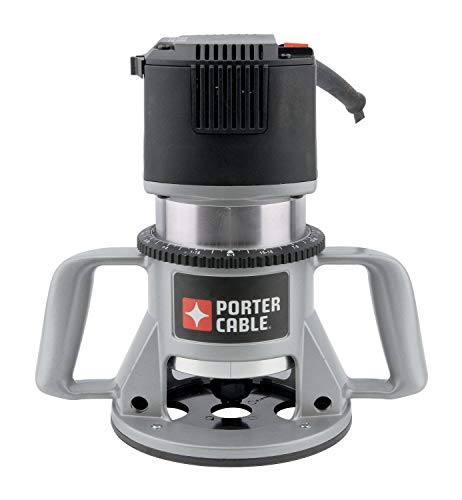A wood router is one of the most versatile pieces of woodworking equipment that you could have in your workshop. It’s a powerful tool that spins a bit, or a cutter, at very high speeds and, with the many various types of bits that you can buy for wood router; there is no end of woodwork jobs that can be made much easier to complete.
Using a beginners wood router is not difficult, but it does take a bit of practice to perfect. You also need to be aware that a router operates at extremely high speeds, so care must always be taken when using one and the proper safety precautions observed. If you have never used a wood router before; here are some basic tips on how to use a wood router for beginners.
If you have never used a wood router before; here are some basic tips on how to use a wood router for beginners.
I. What’s the difference between a plunge router and a fixed router?

One of the first questions that most wood router beginners want answered is what the difference is between a plunge router and fixed router. With a fixed router, you set the depth of the cut before you begin to use the router and it stays fixed. A plunge router, on the other hand, lets you adjust the depth of the cut while you are using the router, which can be useful if you want to start from the middle of a piece of wood, or you want to gradually increase the depth of the cut. Many plunge routers do have the option to fix the depth as well, so you can get the best of both worlds with a wood router of that type.
II. Using the right bit profile for the job
Whether it’s a plunge router or a fixed router, all wood routers have a collet, which enables you to use a wide range of different types of bits for different types of jobs, each one with a different profile. The range of bits available is vast, but some of the most common ones are as follows:
Cove Bit

A cove bit provides a rounded concave profile on the edge of stock.
Straight cutting dado bit
A straight cutting dado bit creates a square channel in the middle of a piece of wood.
Ogee Bit
Sometimes called a Roman Ogee, an Ogee bit will cut an ornate S-shaped profile into the edge of stock.
Rabbeting Bit
A rabbeting bit cuts a square dado profile into the edge of a piece of wood.
Roundover bit
A roundover bit will cut a rounded profile into the square edge of a piece of wood. These are just a few of the many router bits that you could use. There are many more that will provide you with all kinds of different profiles.
III. How to Install a Router Bit Properly

If a router bit is not installed properly, it will vibrate, which will lead to a rough finish and it could also be very dangerous. Firstly, you should check that the bit is clean and sharp. When you install the bit into the collet, only about ¾ of the shank needs to be placed inside the collet. Then, of course, make sure that you tighten the router bit securely in the collet before you use the wood router.
IV. How to Avoid Splintering Wood
When you use a router with woods like oak, which have a strong grain, the wood can easily splinter if you don’t take care with it. To reduce the risk of splintering, make sure that the bit is in good condition and it is sharp and, when you can, cut with the grain rather than against it. It will also help to avoid splintering if you make several passes at a cut, rather than trying to complete the full depth of the cut in one go.
V. Move from Left to Right
One of the most common mistakes that wood router beginners make is that they advance the router along the wood in the wrong direction. For the best results, you should move the router in the opposite direction that it is rotating, which would be from left to right if you are using the router in a top-up position. If you do that, you will find that have much better control of the router and it won’t run away from you.
VI. Safety Precautions When Using a Wood Router
As with any power tool, there are few simple safety precautions you should bear in mind when you use a wood router. You will need appropriate safety gear, which will include protective glasses to protect your eyes against flying debris and ear defenders to protect your ears against the noise. You also need to always make sure that the bit is secured firmly in the collet and that you set that speed of the router appropriately for the bit you are using. We hope that you have found these basic tips for wood router beginners helpful. If you have never used a wood router before, you will be amazed at how quickly you can achieve professional looking results and how many different jobs you can do with a router. We do suggest, however, that you practice first on some scrap wood before you try to use your router on an actual piece of work. Wood routers spin at extremely high speeds, so mistakes are easy to make, but it won’t take long for you to master the technique of using a wood router.
